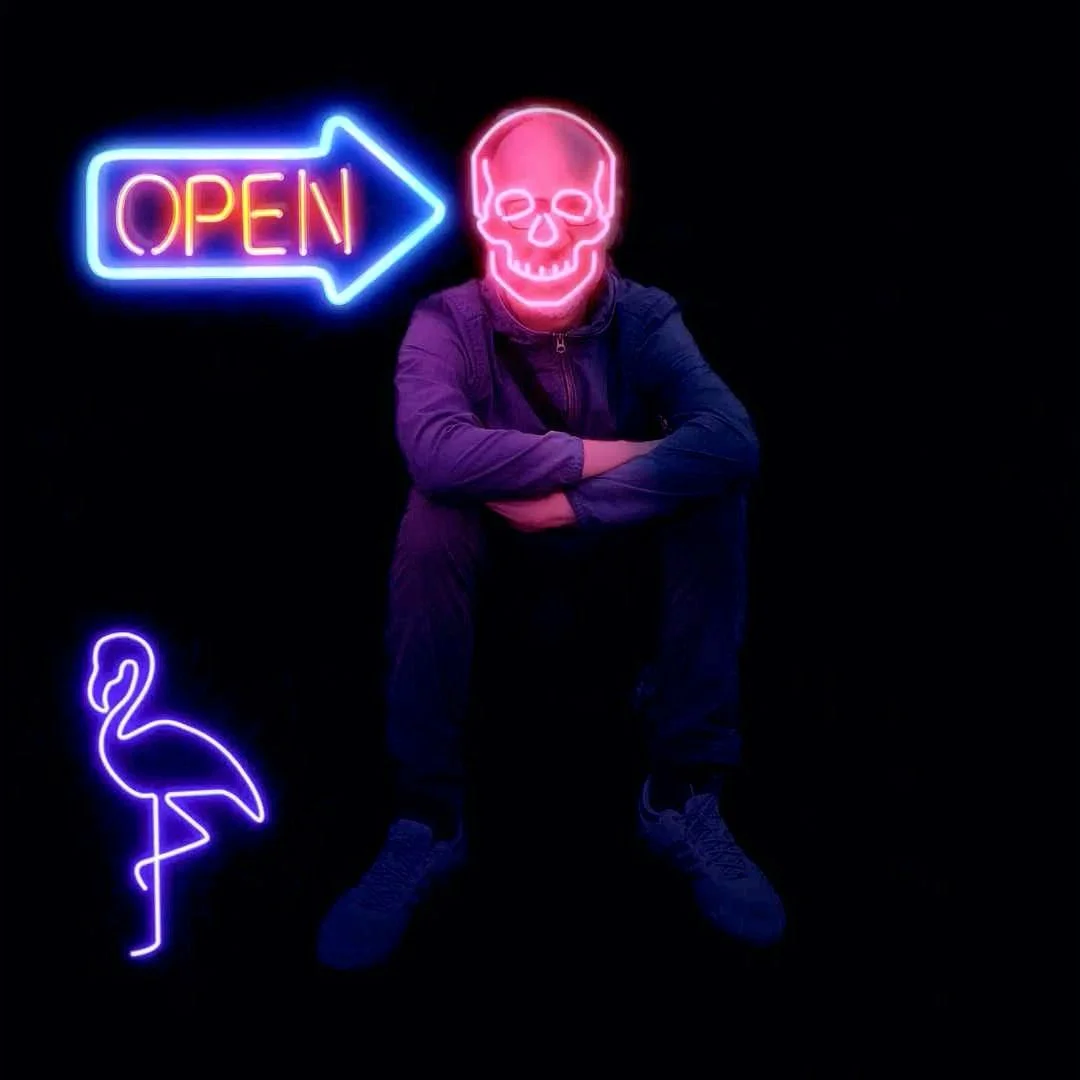Erna Klaus
The painting of Erna Klaus is an expression of an inner movement – a search that can never be completely pinned down.
It does not follow a clear line, but rather an open process in which intuition, experience, and meditative reflection come together. A painting often begins with a single stroke – what follows then unfolds in stages, sometimes over weeks or months. She sees faces, figures, stories – not planned, but discovered in the process of painting.
Her works arise from a desire to find something of her own, beyond mere imitation. She does not want to copy, but to engage with the unpredictable, the spontaneous, the wild. Perhaps the term “Art Brut” or “Raw Art” best captures her approach: untamed, free, open to breaks and surprises. She loves it when color shines, when a painting conveys joy – as a counterbalance to a world that is often dark.
Inspired by travels, exhibitions, encounters, and daily meditation, she continuously develops her style. She paints both representationally and abstractly, without committing to a single motif. Each painting is meant to leave space for personal interpretations – and perhaps set something in motion in the viewer: a smile, a thought, a pause.
The art of Erna Klaus does not aim to explain, but to touch.
It wants to live – not in a basement or a storage room, but on a wall. Only there does it fulfill its purpose. Text: Fridtjof Atterdal
Erna Klaus – Finding Light in Color and Form
Erna Klaus is a contemporary artist whose path to painting is as unconventional as her expressive, color-intense works. She did not come from a traditional artistic background but discovered art later in life—through a formative experience during a painting course in Munich. There, under the guidance of a Bob Ross–trained artist, she created her first two oil paintings. This moment marked the beginning of a new, deeply personal journey: art became not just a form of expression but a calling.
Driven by curiosity and a deep inner urge to create, Klaus immersed herself in painting. She attended numerous courses in Austria and Germany, always seeking out artists whose approach resonated with her. A pivotal turning point came when she was accepted into the Kolbermoor Academy of Art. There, she received her first structured artistic training—training that went beyond technique and gave her space to develop her own visual language and artistic stance. In 2024, she was admitted to the prestigious summer academy of Professor Markus Lüpertz, where she is currently in the first year of a three-year program. The conversations with Lüpertz, she says, are of particular importance to her artistic development.
Her stylistic evolution led her from initially representational painting toward an increasingly abstract and intuitive visual language. In the beginning, she painted floral motifs and landscapes, but gradually she allowed herself to be guided by spontaneous creation. “The first stroke is crucial,” says Klaus—an impulse that marks the beginning of an inner dialogue with the canvas. Many of her works rest for weeks before she continues them with fresh perspective.
Daily meditation plays a central role in her creative process. It is a source of ideas, color harmonies, and moods. Klaus describes this retreat as essential for working from a place of inner depth. Her visual language is characterized by movement and joy in color—an expression of an artistic intent focused on joy and inner balance. Especially in times of societal and global crises, she sees her painting as a counterbalance.
Klaus switched from oil to acrylic early on—initially for practical reasons, but soon out of conviction. The fast drying time allows her to work in layers and with spontaneity. She has been inspired by artists like Joan Miró and Per Kirkeby, but she rejects imitation. “I want to find my own path—and I believe I’m on the right track,” she says.
Her work has been exhibited internationally, with shows in Munich (Gasteig), Salzburg (Galerie Artlet), Udine (ArtTime), Vienna, Stockholm, Shanghai (Galerie Steiner), and via the Artavita Gallery in Santa Barbara at art fairs in New York, San Diego, Miami (Red Dot), and in the Tokyo Tower. Since 2016, she has maintained a permanent exhibition at the Hotel Alpin in Achenkirch.
She has also been featured in notable art publications: World of Art Magazine (Petru Russu, London), catalogues of the Effetto Arte Foundation, and collections such as Giants and Top 10 Artists. Her works are documented in the digital archives of the Guggenheim Museums and the Deutsches Museum.
Awards such as Artist of the Year 2023 (World of Art), Artist of the Year 2025 (Effetto Arte), and the Leonardo da Vinci Prize in Milan underscore the international recognition of her work.
Despite this visibility, Klaus remains true to her artistic values. She refuses commissioned work. Her paintings must arise from inner necessity—not from external demands. “My work should be honest, not adapted.” Her goal: to create pieces that bring joy and light into everyday life. In a complex world, that is her message—through color, form, and a deeply felt sense of imagery. Text: Fridtjof Atterdal
Foresight, 2022, Acrylic on Canvas, 120 x 100 cm
Impressions, 2021, Mixed Media, 100 x 100 cm
Be happy, 2019, Mixed Media, 80 x 80 cm
Without Title, 2022, Mixed Media, 43 x 33 cm
The Enlightened One, 2022, Mixed Media, 120 x 100 cm
Contacts, 2019, Acrylic on Canvas, 100 x 100 cm
Roar of the Sea, 2018, Acrylic on Canvas, 80 x 80 cm
It`s Pure, 2018, Mixed Media, 80 x 80 cm
Uphill, Downhill, 2023, Mixed Media, 80 x 80 cm
Witch Dance, 2025, Acrylic on Canvas, 80 x 80 cm















